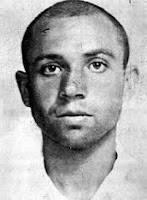About a rather special bloke, his crew and their little ship

In Alicante, on the quayside near the hotel, going down to the Casino there's a little bust of Archibald Dickson and a plaque to commemorate him and the crew of the SS Stanbrook. Archie Dickson was of the same stuff as the men and women of the boats patrolling the seas and oceans looking to save the lives of desperate people fleeing for their lives today. Archie knew what was right. The Stanbrook is small coal fired ship just 70 metres long, 1400 tons and 11 knots top speed. Archibald Dickson is from Cardiff, 47, British Merchant Navy. His ship owners have told him to leave Marseilles and pick up a cargo in Alicante. A Spanish Navy destroyer, controlled by the rebellious forces, which are just about to crush the remnants of the legitimate government, tell Archie not to enter Alicante. He hoists the Red Ensign just a bit higher, grits his teeth, crosses his fingers and takes his ship into Alicante. He doesn't like being told what he can and can't do. The quayside is heaving ...








